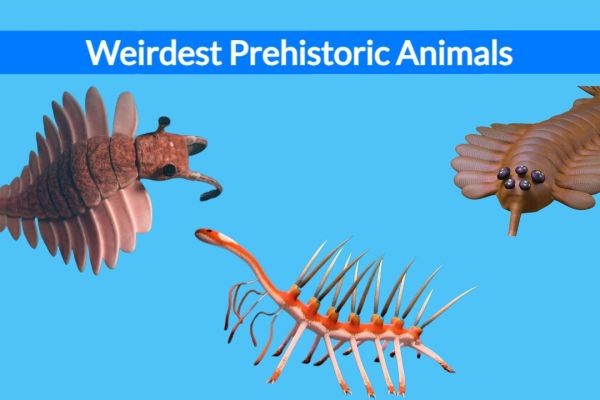Find out if the unique care needs of axolotls make them the perfect pet for your lifestyle by exploring their fascinating world.
08/12/24 • 180 Views
When contemplating an axolotl as a pet, it's vital to comprehend their specific needs. Axolotls require a managed environment, with a 15-20 gallon tank and water temperatures kept between 14 and 20°C to thrive. They feed on a diet of worms, insects, and small fish, necessitating careful attention to their nutritional needs. Their habitat demands include a secure lid and a coarse gravel substrate to maintain water quality. Failing to meet these conditions can result in health issues. Axolotls can live up to 15 years with proper care, showcasing their remarkable regenerative abilities. Their care complexity ensures a fulfilling pet ownership journey, uncovering more insights as you progress.
Understanding Axolotls
Axolotls, unique aquatic amphibians native to Mexico, require specific environmental conditions to thrive in captivity. As fully aquatic beings, their habitat needs are distinct from those of other pets. You must guarantee a well-maintained aquarium that mimics their natural environment in the Xochimilco lakes. This includes managing water quality, and temperature and adding enrichment items like rocks and plants to simulate their native surroundings.
These unique creatures, with their distinctive light and dark patterns and charming headdress gills, can make a good pet for those willing to invest time in understanding and meeting their specific needs. However, failing to meet these habitat requirements can lead to health problems, significantly shortening their lifespan. Proper care can see them live up to 15 years, showcasing the importance of a meticulously designed environment.
Given their status as an endangered species, keeping an axolotl also carries the responsibility of contributing to the preservation of a unique form of life. Before considering an axolotl as a pet, it's essential to weigh the commitment required to prevent potential health problems and ensure their well-being in captivity.
Essential Care Requirements
When arranging a habitat for your axolotl, it's crucial to guarantee the tank's dimensions and conditions meticulously meet their specific needs. This includes a minimum size of 15-20 gallons and a water temperature consistently maintained between 14 and 20°C. Additionally, their dietary requirements demand careful consideration, focusing on nutrient-rich foods suitable for their unique digestive systems.
Implementing secure lids and an appropriate substrate further safeguards their health, preventing escapes and accidental ingestion, respectively.
Habitat Setup Necessities
To ensure your axolotl's health and happiness, it's essential to establish a habitat that meets specific size, temperature, and substrate requirements. Axolotls need a tank size of 15-20 gallons, offering ample space for movement and growth. A secure lid is crucial to prevent escapes, as these creatures may try to climb out. The tank should be slightly longer than the axolotl to facilitate comfortable swimming. Coarse gravel serves as an ideal substrate, aiding in water quality maintenance.
Additionally, maintaining water temperature between 14 and 20°C is vital for their well-being. This precise range supports their metabolic processes without causing stress. Incorporating hiding spots further enriches their environment, mimicking natural conditions and promoting a sense of security.
Dietary Needs Overview
Understanding the carnivorous dietary needs of axolotls is essential for their health and vitality, necessitating a balanced intake of worms, insects, crustaceans, and small fish. Here are some important points to guarantee that your axolotl's diet meets their nutritional requirements:
- Adjust feeding amounts based on your axolotl's size and age to avoid overfeeding and make sure they're receiving the right nutrition.
- Promptly remove uneaten food to maintain water quality and minimize contamination risks.
- Monitor your axolotl's appetite closely to confirm they're consuming adequate nutrients for their well-being.
- Steer clear of feeding them items from gardens or natural water sources, which could introduce health hazards.
Diet and Nutrition
- Comprehending the necessary nutrients needed by axolotls is crucial to their health and vitality.
- You'll need to establish a feeding schedule that aligns with their specific dietary needs, considering their age and size for top-notch nutrition.
- This approach guarantees they receive a balanced diet, preventing malnutrition and promoting a healthy aquatic environment.
Essential Nutrients Required
Axolotls, being carnivorous, require a diet rich in worms, insects, crustaceans, and small fish to meet their essential nutritional needs. As carnivores, their feeding habits are critical to ensuring they receive the necessary nutrients to maintain their health. It's essential to source their food from a pet store, guaranteeing that their diet meets the stringent dietary requirements these unique creatures have.
- Worms and Insects: Provide protein and fat necessary for energy and growth.
- Crustaceans: Offer a source of minerals important for bone health.
- Small Fish: Supply essential fatty acids for optimal nervous system function.
- Regular Monitoring of Appetite: This ensures the axolotl is consuming enough nutrients to sustain its health.
Adjusting the feeding amounts based on the axolotl's size and age is vital for proper nutrition, while uneaten food should be removed to maintain water quality and overall health.
Feeding Schedule Tips
To optimize your axolotl's health and growth, it's vital to establish a regular feeding schedule that meets their specific dietary requirements. As carnivores, their diet should consist of worms, insects, crustaceans, and small fish.
It's important to obtain their food from a reputable pet store instead of gathering it from a garden or lake to avoid potential health risks. The amount of food you provide should be adjusted based on the size and age of your axolotl, ensuring a well-balanced diet that supports their well-being.
Additionally, removing any uneaten food is essential to maintaining water cleanliness. Monitoring your axolotl's appetite can also serve as an informative indicator of their health, enabling you to adjust their feeding schedule as needed to effectively meet their nutritional requirements.
Lifespan and Health
Considering their potential to live up to 15 years in captivity, axolotls offer long-term companionship when given proper care. These amphibians aren't only enthralling due to their appearance but also their remarkable biology. Axolotls possess an extraordinary ability for regeneration, allowing them to recover from injuries that would be catastrophic for other species. This unique trait underscores the importance of creating a vital-free environment to maintain their health and longevity.
To make sure your axolotl thrives, contemplate the following:
- Regular Water Maintenance: Clean, well-kept water is essential for preventing diseases and promoting a healthy lifestyle.
- Observation for Regeneration: While their regenerative abilities are remarkable, monitoring the process can help detect any complications early.
- Watch for Stress Signs: Identifying and mitigating stressors early on is crucial for preventing health issues that could shorten their lifespan.
- Veterinary Care: Consulting with a vet experienced in exotic pets can provide tailored advice for axolotl care, especially regarding any signs of metamorphosis or unusual health concerns.
Aquarium Setup
After understanding the importance of maintaining health and longevity in axolotls, it's imperative to focus on creating the ideal aquarium setup that meets their specific needs. Selecting a tank size of 15-20 gallons is the first step, providing ample space for your axolotl to thrive throughout its lifetime. It's not just about the volume; the tank's depth should also be slightly longer than your axolotl's length, ensuring comfortable movement and exploration.
A secure lid is non-negotiable. Axolotls possess a curious nature, prompting them to investigate their surroundings, which might lead to escape attempts. Therefore, a lid not only keeps them safely within their aquatic home but also maintains the tank's internal environment. The choice of substrate holds equal importance. Coarse gravel is recommended to closely mimic their natural habitat, offering both a familiar texture underfoot and necessary traction. This setup detail contributes significantly to their psychological well-being.
Lastly, water temperature control can't be overlooked. Maintaining a range between 14 and 20°C is critical. Fluctuations outside this spectrum can stress your axolotl, affecting its immune system and overall health. Each aspect of the aquarium setup, from tank size to water temperature, plays a pivotal role in fostering a safe, comfortable environment for your axolotl.
Handling and Interaction
Comprehending the distinctive biology and behavior of axolotls is essential when it comes to their handling and interaction, as their delicate bodies and sensitive skin necessitate a cautious approach to guarantee their well-being. Due to their sensitive nature, the handling of axolotls should be minimal. Their remarkable ability to regenerate lost body parts, while fascinating, isn't a license for careless interaction, as the process demands significant energy and can be stressful for the animal.
To help you enjoy and care for your axolotl responsibly, consider these guidelines:
- Minimize Handling: Only handle your axolotl when absolutely necessary, such as during tank cleaning, and using wet hands to reduce stress and potential skin damage.
- Separate Enclosures: To prevent cannibalism, a behavior not uncommon in stressed or confined conditions, keep axolotls in separate tanks.
- Observe, Don't Interact: Your primary mode of interaction should be observation to monitor health and well-being, ensuring a stress-free environment for your pet.
- Limited Interaction: Understand that axolotls aren't typical pets that enjoy or benefit from human interaction; their comfort and health are best maintained with limited direct contact.
Legal Considerations
While you focus on providing a stress-free environment by minimizing physical interaction with your axolotl, it's equally important to be aware of the legal landscape surrounding the ownership of these unique creatures. Exotic pet laws vary notably across states and even cities, making it vital to understand local restrictions before considering an axolotl as a pet.
In certain states, such as California, Maine, New Jersey, and Virginia, owning an axolotl is outright illegal, reflecting strict regulations aimed at protecting local ecosystems and acknowledging the axolotl's critically endangered status in the wild. Additionally, New Mexico imposes specific restrictions, underscoring the necessity of thorough research to guarantee compliance with all legal requirements.
Given their precarious conservation status, the legal framework is designed to prevent further endangerment, both in their native habitat and globally. This legal complexity directly influences the price range for purchasing an axolotl, which typically falls between $30 and $80, varying by location and breed.
Before you decide to bring an axolotl into your home, carefully examine the exotic pet laws applicable in your area. This precaution not only safeguards the well-being of axolotls but also ensures that would-be owners are fully informed and legally compliant.
Pros and Cons
Considering the distinctive aspects of axolotl care, it's important to weigh the pros and cons before deciding to adopt one of these intriguing amphibians as a pet. Axolotls, with their unique characteristics, have become an increasingly popular choice for those looking for an exotic pet. However, like any pet, they come with their own set of requirements and considerations.
- Low Maintenance: Axolotls require a suitable tank setup that, once established, demands minimal upkeep, making them relatively low maintenance compared to other exotic pets.
- Regenerative Abilities: Their remarkable regenerative abilities aren't only a scientific curiosity but also reduce the need for veterinary intervention for minor injuries, making axolotls fascinating and somewhat resilient pets.
- Calm and Docile Nature: Suitable for owners of all ages, axolotls have a peaceful demeanor, making them an excellent choice for first-time exotic pet owners.
- Long Lifespan: With a lifespan exceeding 10 years, axolotls offer long-term companionship, allowing for a deep and rewarding bond to develop over time.
Finding Your Axolotl
After evaluating the advantages and challenges of axolotl ownership, your next step involves pinpointing where to acquire a healthy specimen. Axolotls can be found in pet retail chain stores, big box pet stores, and exotic reptile stores. They are commonly priced between $30 and $80, depending on color and size. It's important to source axolotls from reputable sources to guarantee their health and well-being. Their high demand stems from their cuteness, hardiness, and ease of care, making them a sought-after pet.
When selecting your axolotl, it's essential to take into account the specific care requirements, including tank size and suitable substrate, to support their comfort and longevity. The length of your axolotl, often determined by its age and health, can influence the size of the habitat required. A healthy axolotl's head should be proportionate to its body, an indicator of proper feeding and care.
Opting for a pet store that provides detailed care information and appears dedicated to the well-being of its animals can greatly impact the quality of life your new pet will enjoy. Ensuring your axolotl's habitat is prepared with a suitable substrate and ample space, taking into account the potential length of your axolotl, is vital for their thriving in your care.
Conclusion
To sum up, while axolotls are unique and fascinating pets, they demand meticulous care. Their specific dietary, temperature, and pH requirements necessitate a well-maintained aquatic environment. Their notable longevity underscores the need for a long-term commitment to their well-being. Legal restrictions in certain areas further complicate ownership. Prospective owners must weigh the benefits of their distinctive companionship against the detailed attention their care entails, ensuring a suitable match for both the axolotl and themselves.









